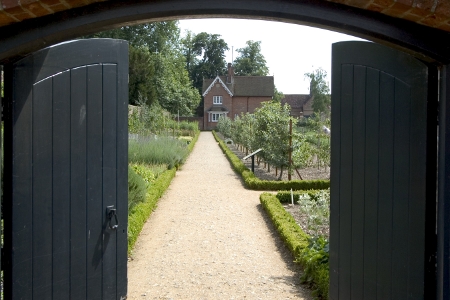
Victorian Inspiration
Issue 57 June 2009
Looking for some gardening inspiration, Sarah Joseph followed in her ancestors’ footsteps, travelling to the Victorian kitchen garden at Audley End House.
Having been on the Good Life Express for over a year, I thought it was time I got some outside inspiration. As I am passionate about trying to garden organically, I got in touch with Garden Organic to see what inspiration they could offer. Garden Organic, a charity, has been at the forefront of the organic horticulture movement for 50 years and has Prince Charles as its patron. They have two gardens: one in Ryton, Warwickshire, and the other in Audley End House, Essex.
For me, the location of the two Garden Organic gardens was spooky. You see, in the study of my family tree, I found that my great-great-great-great-grandfather was born in 1783 in Ryton and had worked in the historic gardens there. In addition, on a separate line of my family tree, both my great-great-grandmother born in 1846 and her daughter, my great-grandmother born in 1875 – had worked at Audley End House!
So, it was with more than a little bit of curiosity and excitement that I travelled to Essex with my husband and children to see the fully restored Victorian kitchen garden at Audley End and imagined my great and great-great-grandmothers walking through the house and gardens.
Audley End is a beautiful Jacobean country mansion set in acres of rolling gardens that were once landscaped by the famed Capabil-ity Brown. The property is now owned and run by English Heritage who appointed Garden Organic in 1999 to completely restore and maintain the two acre walled Victorian kitchen garden there. The kitchen garden, originally built and used during Victorian times, once solely stocked the Audley End larder, and residents were fed all year round by its produce.
I met with Mike Thurlow, Head Gardener of the two acre kitchen garden, to find out a little more about the restoration and ongoing project.
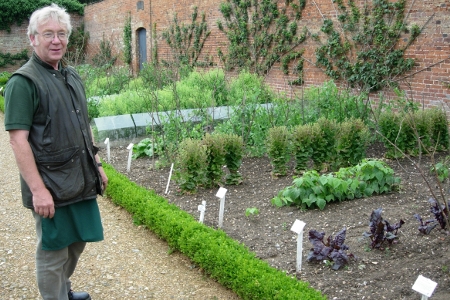
The two words that Mike focused on as we toured the beautifully structured site were ‘history’ and ‘local’. Every plant they put into the garden is either a historic variety or it is from the local area. The reasons for this are not simply the recreation of an authentic historic garden, but rather to truly garden organically the historic and local plants which have been bred to naturally resist the local pests and best suited to the local climate.
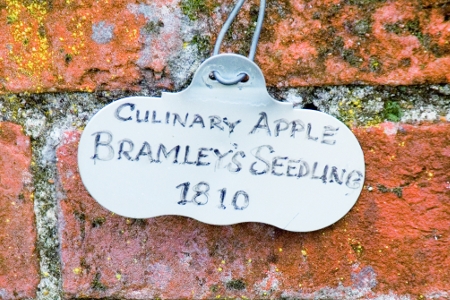
The garden beds have been framed with wonderful apple espaliers, where the apple trees have been trained to grow two-dimensionally, creating a flat fence all round the garden. Pears and other fruit trees have similarly been trained to grow on the walls. Mike has put in a wide variety of apples, many from the 19th century, and is particularly keen to show me a new section of the garden with regional south east England varieties. The apple tree fence provides a point of interest and provides shelter but still allows air to circulate.
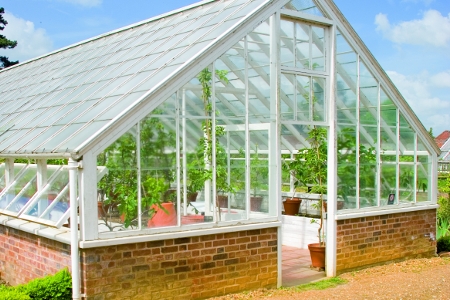
In the garden there are two glass houses, both original features. They dominate the garden and are structures of real beauty. Inside, an array of grapes, peaches, lemons and strawberries are grown, as well as starting off the vegetables which will then be transplanted into the main beds outside. In the glass houses, Mike marvels at the skill of the Victorian gardeners: “We have a diary from the period and they had grapes in May. Victorians did all this by controlling the heat. They then preserved the grapes in glass bottles to keep them fresh until there was something new to provide the house.”
Those gardeners of yesteryear were indeed highly skilled, always providing something new for the lords and ladies of the grand house who had discerning palates. Rhubarb and asparagus were always white and tender, never pink or green. Peaches were grown with their fragrance in mind, “We stop watering them once they are set to increase the flavour.” Indeed, every variety was chosen for its flavour. This is so different to the shop bought produce today, where varieties are chosen for their disease resistance and ability to mass produce, so flavour is often sacrificed.
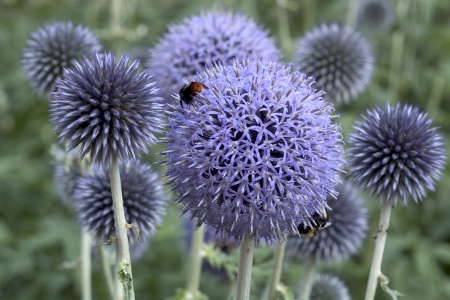
The Victorian example is something which Mike tries to emulate and explains the difference between the plants he cultivates and the ones for mass cultivation, “You don’t have the same needs as a kitchen gardener as the big producers.” Indeed not. The big producers have to harvest their entire crop at the same time, transport and store the product, and the product has to be uniform in shape and col-our. Whereas, as Mike points out, “A kitchen garden needs crops throughout the season. You don’t want all your peas in a one week window.” This means sequence planting is a must for the home gardener.
To help support gardeners sowing varieties historically cultivated for attributes such as flavour, Garden Organic has a Heritage Seed Library which requires the support of gardeners. Individuals can join the scheme and will eventually be able to enjoy seeds which have dropped out of common use. The temptation for the new gardener is to buy F1, fully disease resistant seeds and get as big a harvest as possible. I learnt from Mike that I need to think local, find out what works for my garden and to make sure that I provide a garden where birds and insects keep the diseases down.
Chick Diary
HEALTH CHECKS
With last month’s health adventures I have become rather obsessed with checking the girls over, and I am not sure they are very happy about this. I am constantly picking them up, turning them round and examining them for any signs of ill health. I have become like an over-protective mother and it is not good. I picked Georgina up one evening and she had a hard and mas-sive crop. Panicking in case she had an impacted crop, I poured a syringe full of olive oil down her and gently massaged her crop. She was none too impressed. In the morning I dived down first thing ready to administer more oil and massage her again only to find her crop empty. Obviously her crop had not been impacted, she had just eaten a lot that day!
CHICKEN WARS
I keep the two flocks separate, but we have had a few sessions of joint free ranging, albeit monitored. In the beginning we had a few hair-raising moments of what can only be described as cock fighting. Feathers have been puffed up, necks stretched as they go head to head and pull out each others’ feathers. CC is the worst. Despite her one eye she is definitely top chicken amongst the ex-bats and refuses to allow any prima-hen from the other flock to put her down. My husband has turned a fair few hens upside down, which usually cools matters down, and my son monitors affairs with a big stick to separate them as neces-sary. They are getting better, thank goodness, and the supervised free-ranging is definitely getting easier; but I’m certainly not ready to put the two flocks together permanently.
LAZY MABEL
I am afraid to announce that whilst all the other hens give us eggs virtually every day, Mabel has stopped laying. Honestly, she really is too posh to push and it makes me the butt of the jokes in our house. At least Bunty is laying despite her sour crop and they are seriously big eggs!
Bookmark this |
|
Add to DIGG |
|
Add to del.icio.us |
|
Stumble this |
|
Share on Facebook |
|
Share this |
|
Send to a Friend |
|
Link to this |
|
Printer Friendly |
|
Print in plain text |
|


Comments
0 Comments